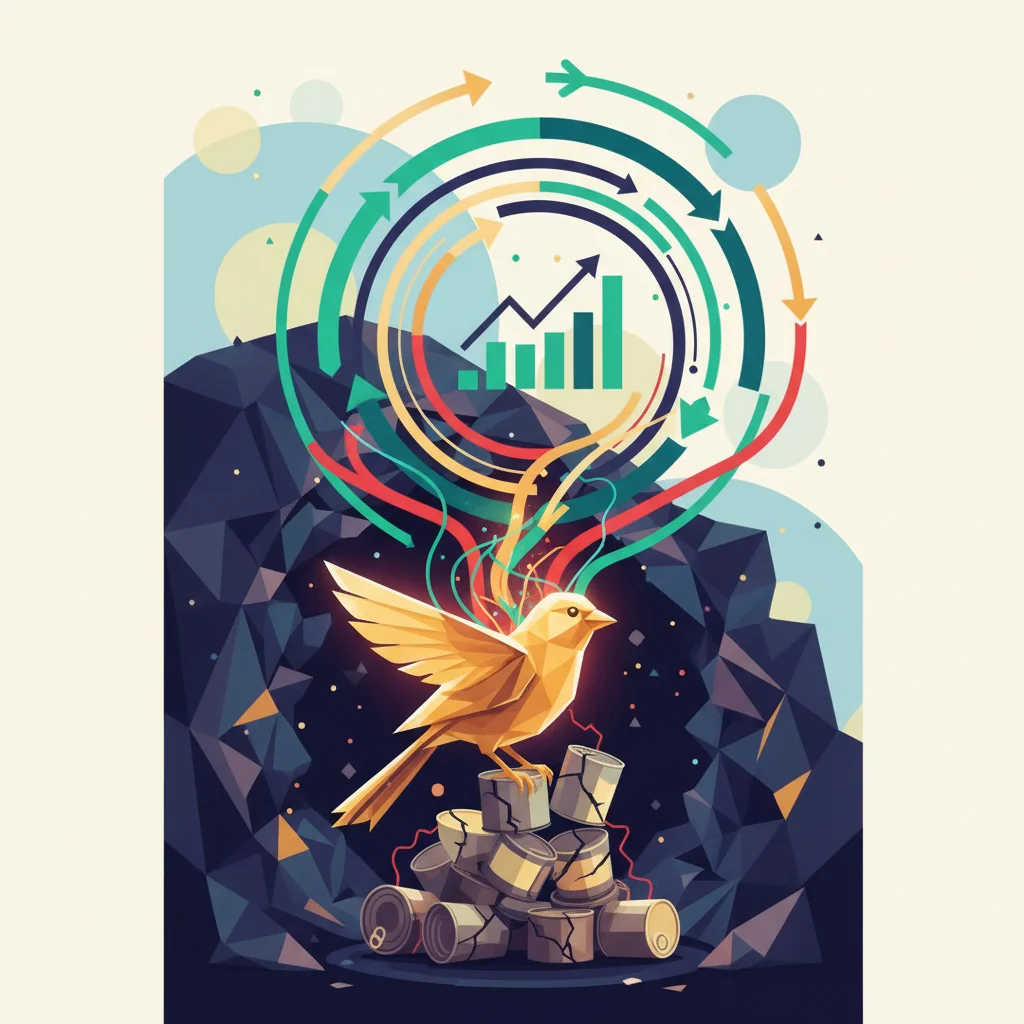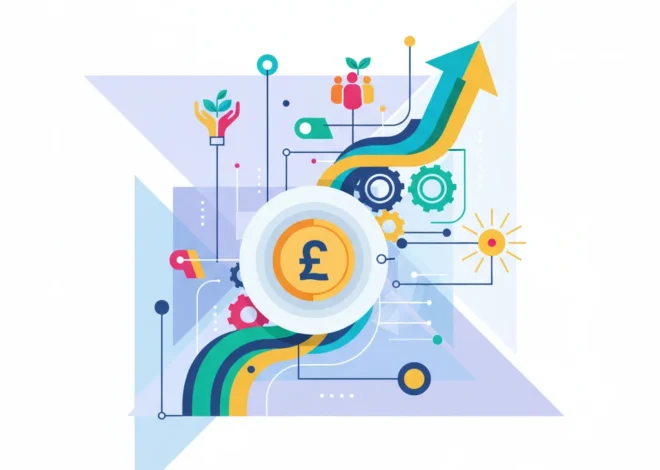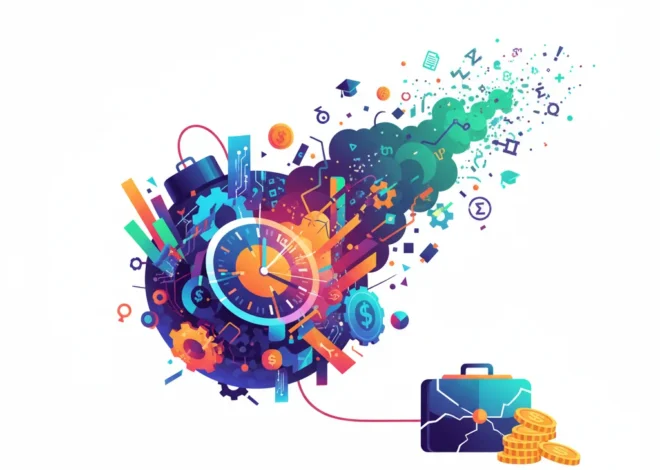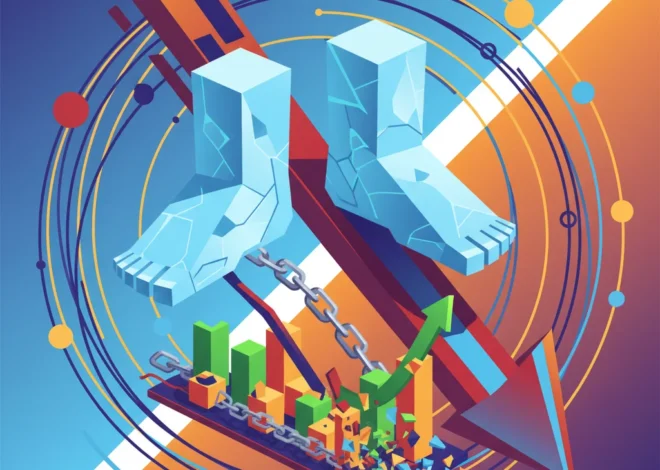
The Canary in the Coal Mine: What a Struggling Food Bank Reveals About the Broader Economy
In the world of finance and high-stakes investing, analysts look for signals—leading indicators that predict the future trajectory of the stock market and the health of the global economy. We scrutinize PMI data, consumer confidence indices, and central bank minutes. Yet, one of the most potent, real-time indicators of economic distress often operates far from the trading floor: the local food bank. A recent report from the Isle of Man, where the local food bank is described as being “run off its feet” amidst a sharp decline in donations, is more than a local news story. It’s a critical data point—a canary in the coal mine signaling deep-seated pressures that investors, business leaders, and finance professionals cannot afford to ignore.
This situation presents a stark paradox: the very economic forces driving more people to seek help are simultaneously constricting the flow of charitable giving. It’s a dual-sided crisis that offers a raw, unfiltered look at the real-world consequences of macroeconomic trends, monetary policy, and shifting consumer behavior. By dissecting this microcosm, we can gain invaluable insights into the resilience of our communities and the underlying fragility of an economy that may appear robust on paper but is cracking at the seams.
The Food Bank as a Lagging Economic Indicator
Financial markets are forward-looking. A rally in the stock market often reflects optimism about future earnings and economic growth. However, community-level metrics, such as food bank usage, are powerful lagging indicators. They don’t predict the future; they reveal the painful reality of the present, reflecting the cumulative impact of past economic events. The surge in demand on the Isle of Man is a direct consequence of sustained inflationary pressures and the broader cost-of-living crisis that has squeezed household budgets across the developed world.
For months, central banks, including the Bank of England, have used interest rate hikes as their primary tool to combat inflation. While necessary from a macroeconomic perspective, this tightening of monetary policy has tangible, and often severe, consequences. Higher borrowing costs for mortgages, loans, and credit cards directly reduce the disposable income of millions. When combined with elevated prices for essentials like food, energy, and housing, the result is a perfect storm that pushes a growing segment of the population toward financial precarity. According to The Trussell Trust, a leading UK food bank network, over 3.1 million emergency food parcels were distributed in the year to March 2024, a staggering 94% increase over five years (source). This isn’t a niche problem; it’s a systemic one.
The Donor Squeeze: When Economic Uncertainty Hits Philanthropy
The second half of the equation reported by the Isle of Man Foodbank is the “marked decline in donations.” This phenomenon is equally rooted in core principles of economics and investor psychology. Charitable giving is highly correlated with economic confidence and the “wealth effect.” When individuals feel financially secure—their investment portfolios are growing, their property values are rising, and their job security is high—they are more willing and able to be generous.
Conversely, during periods of economic uncertainty, volatility in the stock market, and high inflation, even affluent households begin to tighten their belts. The psychological impact of seeing a trading portfolio decline or reading headlines about a potential recession can curb discretionary spending, and for many, charitable donations fall into this category. This creates a pro-cyclical crisis for charities: demand for their services soars precisely when their supply of funding and resources dwindles.
To illustrate the pressures facing both aid recipients and potential donors, consider the following economic factors at play:
| Economic Indicator | Impact on Households & Donations |
|---|---|
| Sustained High Inflation | Reduces real-term wages and purchasing power, increasing the number of people needing assistance. Erodes the value of savings for potential donors. |
| Elevated Interest Rates | Increases mortgage and debt servicing costs, leaving less disposable income for essentials, let alone charitable giving. |
| Market Volatility | Creates a negative wealth effect, making investors and savers feel less financially secure and thus less likely to donate. |
| Wage Growth Lag | When wage increases do not keep pace with inflation, as has been the case for many, the gap forces difficult financial trade-offs. |
This confluence of factors demonstrates that the food bank’s struggle is not an isolated issue of charity but a direct reflection of systemic economic strain. It is a stress test of our social safety nets and a clear signal that the benefits of any top-line economic recovery are not being distributed evenly.
Beyond the Bonus: Why ANZ's Million Pay Cut Signals a New Era for Banking Accountability
Fintech, Blockchain, and the Future of Giving
For leaders in financial technology, this crisis presents both a challenge and an opportunity. The traditional model of dropping off canned goods or writing a check is inefficient and opaque. This is where innovation in fintech can play a transformative role, creating more resilient and efficient systems for philanthropy that can withstand economic downturns.
Imagine donation platforms that leverage open banking to allow for seamless, “round-up” micro-donations from daily transactions. Consider the application of blockchain technology to create fully transparent supply chains for charitable organizations. A donor could use a crypto-token or a stablecoin to donate and then track their specific contribution, ensuring it was used to purchase, for example, 10 kilograms of pasta that was delivered to a specific distribution center. This level of transparency could rebuild donor confidence, proving that every penny is accounted for, which is particularly crucial when financial anxiety is high.
Furthermore, financial technology can help charities themselves operate more efficiently. Advanced analytics can help food banks forecast demand based on local economic data, optimize inventory management, and reduce waste. Algorithmic trading principles could even be adapted to manage a charity’s liquid assets more effectively, ensuring financial stability. The tools we use to generate wealth in the private sector can and should be deployed to protect the most vulnerable in our society.
The Role of Corporate and Investor Responsibility
The situation on the Isle of Man is a call to action for the business and investment community. Corporate Social Responsibility (CSR) can no longer be a peripheral PR activity; it must be integrated into core business strategy. For a major bank, this could mean partnering with fintech startups to build a fee-free donation platform. For a large institutional investor, it could mean using their influence to encourage portfolio companies to pay a living wage, reducing the number of employees who rely on food banks in the first place—a phenomenon known as in-work poverty (source).
This is not altruism; it is enlightened self-interest. A society with a widening gap between the rich and the poor, where a significant portion of the population struggles with food insecurity, is not a stable environment for business. It leads to social unrest, reduced consumer spending, and a less productive workforce. Investing in social infrastructure, like food banks, is an investment in the stability and long-term health of the entire economy. As one financial commentator noted, social inequality can act as a significant drag on economic growth (source).
COP30 Crossroads: Investing in a World Reshaping its Climate Economy
Business leaders and finance professionals must ask themselves a critical question: what is our role in building a resilient economy? Is it merely to maximize shareholder returns in the short term, or is it to foster a sustainable ecosystem where both businesses and communities can thrive? The answer will define the future of conscientious capitalism.
Actionable Takeaways for a Modern Economy
Moving from analysis to action, here are three key takeaways for our audience:
- For Investors: Broaden your definition of risk. Social instability, driven by economic precarity, is a tangible risk to your portfolio. Start integrating social-health metrics into your analysis. Look for companies that are part of the solution, not part of the problem.
- For Finance Professionals: Drive innovation with purpose. The same skills used in complex derivatives trading or algorithmic development can be applied to solve real-world problems. Champion projects within your organization that use financial technology to create social good.
- For Business Leaders: Look inward before you look outward. The most impactful first step is ensuring your own employees are not among those needing to use a food bank. A commitment to fair wages and employee financial wellness is the most powerful form of corporate responsibility.
Conclusion: An Interconnected System
The plight of the Isle of Man Foodbank is a potent reminder that the economy is not an abstract concept. It is a deeply human system of interconnected fates. The decisions made in boardrooms, on trading floors, and by central banking committees have profound and immediate consequences in our communities. Ignoring the signals from the front lines of social need is not only a moral failure but a strategic error. A truly prosperous economy is one where the doors of the food bank are closing due to lack of demand, not one where they are overwhelmed. That is the indicator we should all be working towards.


